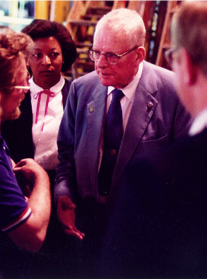Are you still focused on the content of your role?
When you are in a new position it is natural to focus on your new responsibilities—the  content of your role. But frankly, it is assumed that you have the content under control—that is why you received the promotion. The true key to appreciating and adjusting to your new reality is being aware of context. I often suggest that my clients draw a doughnut, put themselves in the center, on the next area write process and the outer circle “context.” The context is the environment you must navigate both in your organization and in your industry.
content of your role. But frankly, it is assumed that you have the content under control—that is why you received the promotion. The true key to appreciating and adjusting to your new reality is being aware of context. I often suggest that my clients draw a doughnut, put themselves in the center, on the next area write process and the outer circle “context.” The context is the environment you must navigate both in your organization and in your industry.
If you have learned nothing else by reading this book, you know by now that diving into your work or getting buried in the task and concentrating on meeting your metrics will throw you off the path. (Yes, I deliberately mixed those diving, burying and throwing metaphors to grab your attention.) How you get to your goal—understanding the process—is more important than the goal itself. With the right processes in place, you can tackle any objective, and make a touchdown even when the goalposts move (to add another metaphor to the pile!).
Note that following a process, going step by step, isn’t the same thing as using linear thinking. Linear thinking is like being on railroad track or being railroaded—it’s automatic, predicable; it will keep you heading into a tunnel even though you see the headlight of an oncoming train. You wouldn’t be where you are today if you led with linear thinking. By contrast, following a process is a good idea—breaking things into steps and communicating those steps to others is at the core of Six Sigma, LEAN, Balanced Scorecard and project management.
Working closely with Dr. W. Edwards Deming, the father of the quality movement, I led  improvements in both manufacturing and state government processes. Interestingly, psychologist Ellen Langer reached an appreciation for processes from a completely different starting point: not from a desire for statistical improvement but from her understanding of mindlessness and its corollary, mindfulness.
improvements in both manufacturing and state government processes. Interestingly, psychologist Ellen Langer reached an appreciation for processes from a completely different starting point: not from a desire for statistical improvement but from her understanding of mindlessness and its corollary, mindfulness.
Remember: Be aware of the context, next the key processes that link to the content of your
role. You will find that there is almost always room to contribute and make improvements.
From Chapter 12 p 117: Have I Adjusted My Thinking to the New Requirements of Leadership?